In the compact car segment, the Ford Puma and VW Polo vie for supremacy, each bringing a unique blend of technology, performance, and style to the road. The choice between them can be daunting, but understanding their technical aspects and innovations may help you make an informed decision.
Ford Puma vs VW Polo – Which car suits you better?
Everyday use, family trips or long-distance drives – here’s where the differences show.
Discover whether Ford Puma or VW Polo fits your lifestyle better.
Design and Dimensions
The Ford Puma is crafted as a small SUV, measuring 4186 mm in length and 1805 mm in width, which gives it a commanding presence on the road. With a height of 1550 mm, it offers a higher driving position compared to the Polo. In contrast, the VW Polo, a hatchback, measures 4074 mm in length and is slightly narrower at 1751 mm and shorter in height, ranging from 1451 mm to 1431 mm. The design of both vehicles appeals to a modern aesthetic, with the Puma’s sportier SUV-like vibe contrasting with the sleek hatchback design of the Polo.
Powertrain and Performance
Under the hood, the Ford Puma offers a selection of petrol engines, with power output ranging from 125 HP to a robust 160 HP, and an impressive torque of up to 200 Nm. The Puma’s acceleration from 0-100 km/h is notable, achieving times as low as 7.4 seconds, thanks to its lightweight construction (curb weight of around 1316 kg) and efficient powertrain. The VW Polo, however, provides a broader range of engine options, with power specifications that include variants offering between 80 HP and an impressive 207 HP. Polo’s turbocharged engines ensure a satisfying driving experience, achieving 0-100 km/h in as little as 6.5 seconds for the most powerful version.
Fuel Efficiency
When it comes to fuel efficiency, the Ford Puma registers consumption figures of 5.4 to 6.0 L/100km, depending on the engine variant. The VW Polo, on the other hand, boasts slightly better efficiency, achieving as low as 5.2 L/100km in some configurations. This makes the Polo a more economical choice for daily commutes, while the Puma delivers on performance without sacrificing too much fuel economy.
Innovative Features
Both cars are furnished with advanced technology and safety features aimed at enhancing the driving experience. The Ford Puma is equipped with Ford’s latest connectivity and infotainment systems, including a user-friendly touchscreen interface, smartphone integration, and a host of driver-assistance technologies. Its innovative storage solutions, such as the mega-box feature in the trunk, add practicality to its sporty design.
Meanwhile, the VW Polo is renowned for its high-quality interior and cutting-edge technology. It comes fitted with a range of infotainment options, including a digital cockpit and an intuitive touchscreen display. The Polo also excels in safety features, offering options like adaptive cruise control, lane-keeping assistance, and various other driver aids that provide peace of mind on the road.
Space and Comfort
In terms of space, the Ford Puma excels with a trunk capacity of up to 456 L, making it more versatile for families or those needing extra space for luggage. The VW Polo, while offering a respectable trunk capacity of 351 L, still provides ample room for five passengers but may fall short for those with larger cargo needs. Both vehicles are designed for comfort, with high-quality materials and ergonomic seating to enhance the overall driving experience.
Conclusion
Choosing between the Ford Puma and VW Polo ultimately comes down to personal preference and needs. If you desire something sportier with an SUV feel, packed with innovative features and impressive performance, the Ford Puma is likely the better choice. Conversely, if fuel efficiency and cutting-edge technology in a compact hatchback fit your lifestyle better, then the VW Polo stands out as an excellent contender. Regardless of your choice, both vehicles offer unparalleled value and a driving experience that is hard to beat in their respective segments.
Here’s where it gets real: The technical differences in detail
Costs and Efficiency:
Looking at overall running costs, both models reveal some interesting differences in everyday economy.
VW Polo has a convincingly advantage in terms of price – it starts at 17000 £, while the Ford Puma costs 24800 £. That’s a price difference of around 7770 £.
Fuel consumption also shows a difference: VW Polo manages with 5.10 L and is therefore barely noticeable more efficient than the Ford Puma with 5.40 L. The difference is about 0.30 L per 100 km.
Engine and Performance:
Power, torque and acceleration say a lot about how a car feels on the road. This is where you see which model delivers more driving dynamics.
When it comes to engine power, the VW Polo has a somewhat edge – offering 207 HP compared to 168 HP. That’s roughly 39 HP more horsepower.
In acceleration from 0 to 100 km/h, the VW Polo is a bit quicker – completing the sprint in 6.50 s, while the Ford Puma takes 7.40 s. That’s about 0.90 s faster.
In terms of top speed, the VW Polo performs slightly better – reaching 240 km/h, while the Ford Puma tops out at 210 km/h. The difference is around 30 km/h.
There’s also a difference in torque: VW Polo pulls hardly perceptible stronger with 320 Nm compared to 290 Nm. That’s about 30 Nm difference.
Space and Everyday Use:
Cabin size, boot volume and payload all play a role in everyday practicality. Here, comfort and flexibility make the difference.
Both vehicles offer seating for 5 people.
In curb weight, VW Polo is a bit lighter – 1143 kg compared to 1316 kg. The difference is around 173 kg.
In terms of boot space, the Ford Puma offers evident more room – 523 L compared to 351 L. That’s a difference of about 172 L.
In maximum load capacity, the Ford Puma performs a bit better – up to 1283 L, which is about 158 L more than the VW Polo.
When it comes to payload, Ford Puma minimal takes the win – 469 kg compared to 457 kg. That’s a difference of about 12 kg.
Who wins the race?
The VW Polo proves to be is largely superior and therefore becomes our DriveDuel Champion!
VW Polo is the better all-rounder in this comparison.
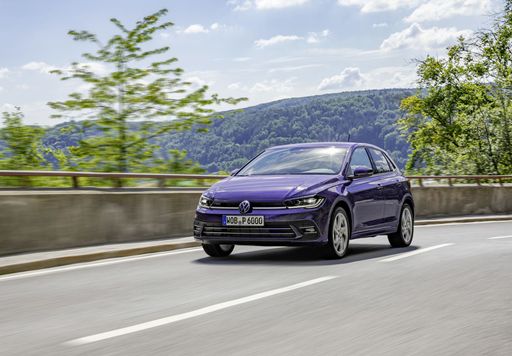 @ Volkswagen AG / VW Media
@ Volkswagen AG / VW Media
VW Polo
Ford Puma
The Ford Puma is a cheeky compact crossover that blends sporty styling with city-friendly practicality, giving drivers a surprisingly fun and composed ride. With clever storage tricks and a lively personality, it’s a smart pick for buyers who want enjoyment without fuss.
details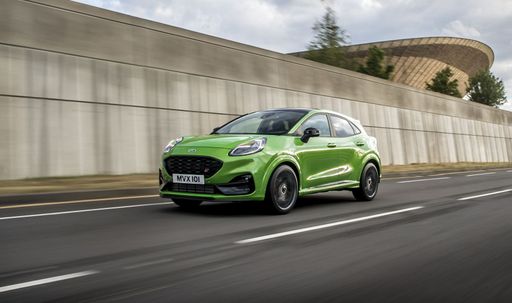 @ Ford Motor Company / Ford Media Center
@ Ford Motor Company / Ford Media Center
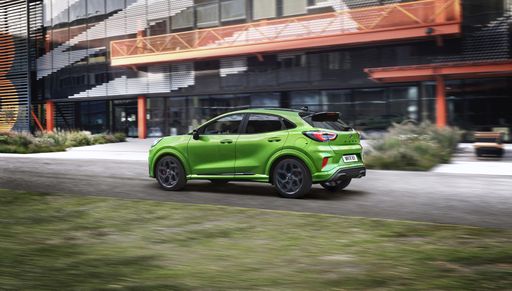 @ Ford Motor Company / Ford Media Center
@ Ford Motor Company / Ford Media Center
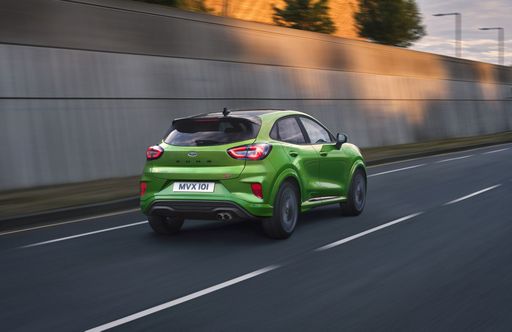 @ Ford Motor Company / Ford Media Center
@ Ford Motor Company / Ford Media Center
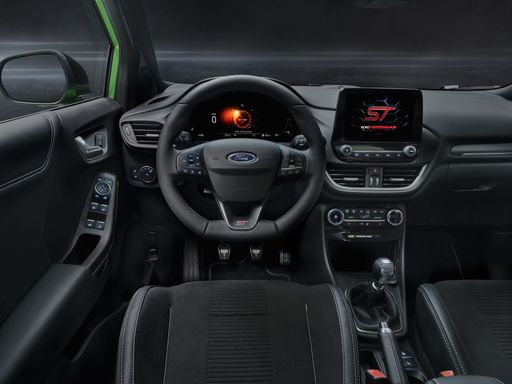 @ Ford Motor Company / Ford Media Center
@ Ford Motor Company / Ford Media Center
VW Polo
The VW Polo remains a popular choice in the compact car segment, known for its sleek design and sophisticated styling. Inside, it offers a surprisingly spacious cabin with high-quality materials and intuitive technology features, ensuring a comfortable driving experience. Its agile handling and responsive performance make it an excellent option for both city commuting and longer journeys.
details @ Volkswagen AG / VW Media
@ Volkswagen AG / VW Media
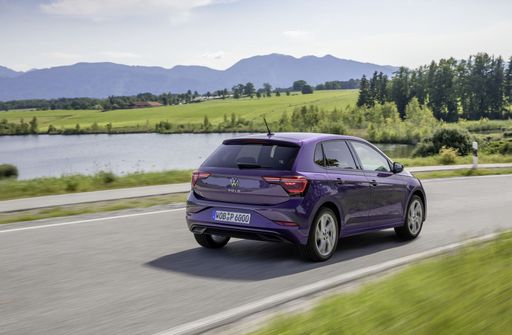 @ Volkswagen AG / VW Media
@ Volkswagen AG / VW Media
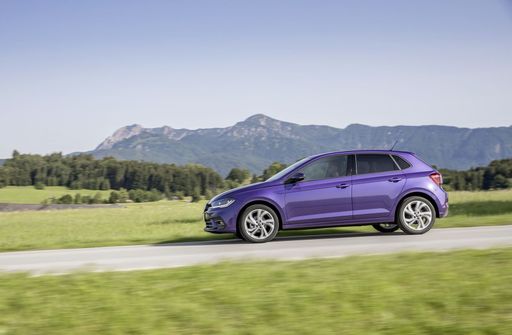 @ Volkswagen AG / VW Media
@ Volkswagen AG / VW Media
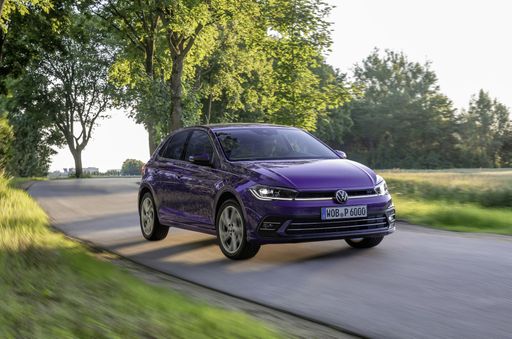 @ Volkswagen AG / VW Media
@ Volkswagen AG / VW Media
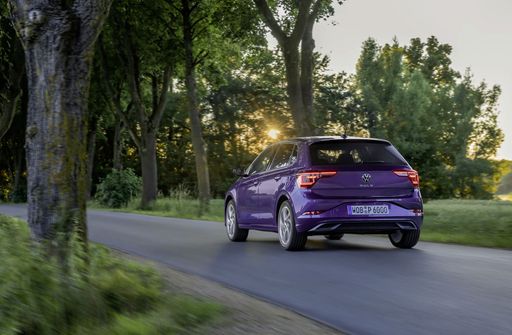 @ Volkswagen AG / VW Media
@ Volkswagen AG / VW Media
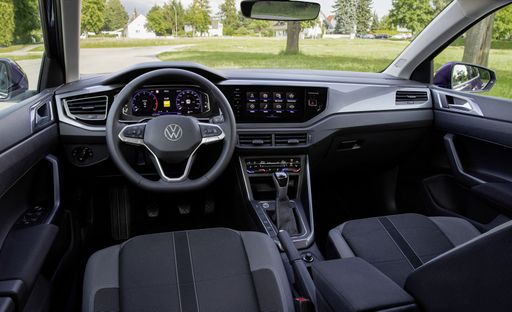 @ Volkswagen AG / VW Media
@ Volkswagen AG / VW Media
 @ Ford Motor Company / Ford Media Center
@ Ford Motor Company / Ford Media Center
|
 @ Volkswagen AG / VW Media
@ Volkswagen AG / VW Media
|
|
|
|
Costs and Consumption |
|
|---|---|
|
Price
24800 - 36300 £
|
Price
17000 - 30400 £
|
|
Consumption L/100km
5.4 - 5.9 L
|
Consumption L/100km
5.1 - 6.5 L
|
|
Consumption kWh/100km
13.1 - 13.9 kWh
|
Consumption kWh/100km
-
|
|
Electric Range
361 - 376 km
|
Electric Range
-
|
|
Battery Capacity
43 kWh
|
Battery Capacity
-
|
|
co2
0 - 135 g/km
|
co2
116 - 148 g/km
|
|
Fuel tank capacity
42 L
|
Fuel tank capacity
40 L
|
Dimensions and Body |
|
|---|---|
|
Body Type
SUV
|
Body Type
Hatchback
|
|
Seats
5
|
Seats
5
|
|
Doors
5
|
Doors
5
|
|
Curb weight
1316 - 1563 kg
|
Curb weight
1143 - 1378 kg
|
|
Trunk capacity
456 - 523 L
|
Trunk capacity
351 L
|
|
Length
4186 - 4226 mm
|
Length
4074 mm
|
|
Width
1805 mm
|
Width
1751 mm
|
|
Height
1550 - 1555 mm
|
Height
1431 - 1451 mm
|
|
Max trunk capacity
1216 - 1283 L
|
Max trunk capacity
1125 L
|
|
Payload
367 - 469 kg
|
Payload
432 - 457 kg
|
Engine and Performance |
|
|---|---|
|
Engine Type
Electric, Petrol MHEV
|
Engine Type
Petrol
|
|
Transmission
Automatic, Manuel
|
Transmission
Manuel, Automatic
|
|
Transmission Detail
Reduction Gearbox, Manual Gearbox, Dual-Clutch Automatic
|
Transmission Detail
Manual Gearbox, Dual-Clutch Automatic
|
|
Drive Type
Front-Wheel Drive
|
Drive Type
Front-Wheel Drive
|
|
Power HP
125 - 168 HP
|
Power HP
80 - 207 HP
|
|
Acceleration 0-100km/h
7.4 - 9.8 s
|
Acceleration 0-100km/h
6.5 - 15.6 s
|
|
Max Speed
160 - 210 km/h
|
Max Speed
171 - 240 km/h
|
|
Torque
170 - 290 Nm
|
Torque
93 - 320 Nm
|
|
Number of Cylinders
3
|
Number of Cylinders
3 - 4
|
|
Power kW
92 - 124 kW
|
Power kW
59 - 152 kW
|
|
Engine capacity
999 cm3
|
Engine capacity
999 - 1984 cm3
|
General |
|
|---|---|
|
Model Year
2025
|
Model Year
2024 - 2025
|
|
CO2 Efficiency Class
A, D
|
CO2 Efficiency Class
D, E
|
|
Brand
Ford
|
Brand
VW
|
Is the Ford Puma offered with different drivetrains?
The Ford Puma is offered with Front-Wheel Drive.
The prices and data displayed are estimates based on German list prices and may vary by country. This information is not legally binding.
